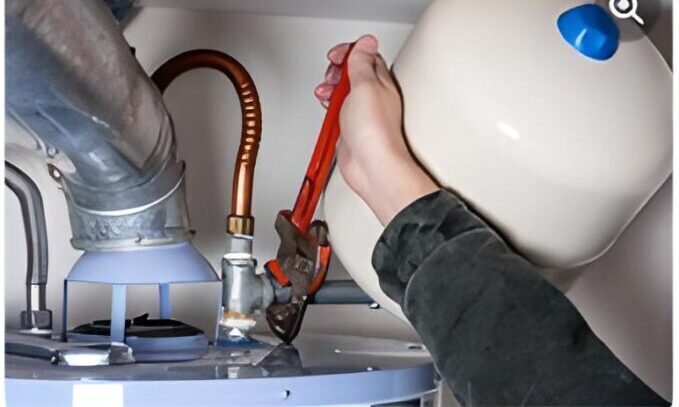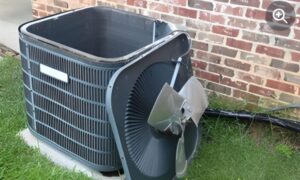Are you tired of taking cold showers and running out of hot water quickly? It’s frustrating to realize that your water heater, the appliance responsible for providing hot water, isn’t working as it should. But don’t worry, you’re not alone.
There are several potential issues that could cause an electric or gas water heater to stop working or produce less hot water than usual. Some common problems can be fixed by yourself with DIY tools. However, it is important to note that some of these issues can be complex and may require the assistance of a professional plumber or HVAC technician.
Table of Contents
Check if the power or gas supply is failing
If you suspect that your electric water heater is not receiving power or that your gas water heater is not receiving a gas supply, there are a few steps you can take to check and troubleshoot the issue.
For an electric water heater, you can check for a blown fuse or tripped circuit breaker by looking at the main electrical panel. If you find that a fuse has blown or a circuit breaker has tripped, you can try resetting it to see if this resolves the issue. If the problem persists, you may need to call a professional electrician to diagnose and fix the issue.
For a gas water heater, you can check the gas supply by looking at the gas meter or gas line to see if there are any visible issues. You can also check the gas valve on the water heater itself to make sure it is open and functioning properly.
If the gas valve is closed or appears to be faulty, you may need to call a professional plumber or gas technician to fix the issue. If you smell gas or suspect a gas leak, it is important to evacuate the area immediately and call your local gas company or emergency services. Do not try to fix a gas leak yourself.
Faulty thermostat or heating element
If you suspect that your water heater’s thermostat may be the cause of the problem, there are a few steps you can take to check and troubleshoot the issue. If you are not aware of what you are doing, always see the assistance of a professional plumber or HVAC technician.
First, locate the thermostat on your water heater. It is usually located on the side or top of the tank and may be covered by a panel or insulation. Once you have located the thermostat, you can try the following steps to test it:
Check the settings:
Make sure that the thermostat is set to a temperature high enough to produce hot water. If the thermostat is set too low, it may not produce enough heat to produce hot water.
Test the thermostat:
You can test the thermostat using a multimeter or other testing device. Follow the manufacturer’s instructions for testing the thermostat, or consult a professional for guidance.
Check for loose or damaged wires:
Make sure that all of the wires connected to the thermostat are secure and not damaged. If you find any loose or damaged wires, you may need to call a professional to fix the issue.
If these steps do not resolve the issue, you may need to replace the thermostat. This is a more complex repair that requires a professional plumber or HVAC technician.
In the Gas water Heaters – check if the pilot light stays lit
If you suspect that your gas water heater’s pilot light may be the cause of the problem, there are a few steps you can take to check and troubleshoot the issue.
First, locate the pilot light on your water heater. It is usually located on the front of the tank and may be covered by a panel or insulation. Once you have located the pilot light, you can try the following steps to check if it is staying lit:
Look for the pilot light:
If you can see the pilot light, observe it for a minute or so to see if it is staying lit or going out. If the pilot light is going out, this could be the cause of the issue.
Check the gas supply:
Make sure that your gas supply is turned on and functioning properly. You can check the gas meter or gas line to see if there are any visible issues.
Check the gas valve:
Make sure that the gas valve on the water heater is open and functioning properly. If the gas valve is closed or appears to be faulty, you may need to call a professional plumber or gas technician to fix the issue.
Check for blockages or debris:
If you can’t see the pilot light, it may be blocked by debris or other substances. Carefully clean around the pilot light to remove any blockages.
If these steps do not resolve the issue, you may need to replace the pilot light assembly or the thermocouple or thermopile with a professional plumber or HVAC technician.
Bad Pressure-Relief Valve ( TPR valve )
The water heater’s temperature and pressure-relief valve, also known as the TPR valve, is a safety feature and should never be capped off or disabled, as this can cause the pressure to rise to dangerous levels and potentially cause the water heater to explode.
You may follow the steps below to check and troubleshoot the issue.
First, locate the TPR valve on your water heater. It is usually located on the side or top of the tank and may be covered by a panel or insulation. Once you have located the TPR valve, you can try the following steps to test it:
Check for leaks:
If the TPR valve is leaking, it may be the cause of the issue. You may be able to see a small stream of water coming from the valve, or you may notice a puddle of water around the valve.
Test the TPR valve:
You can test the TPR valve by gently lifting or pressing the lever. The valve should open and release a small amount of water. If the valve does not open or release water, it may be faulty and need to be replaced.
Check for blockages:
If the TPR valve is not leaking but you are still experiencing issues with your water heater, the valve may be blocked by debris or other substances. Carefully clean around the valve to remove any blockages.
In the Gas Water Heater – Issue with the electronic ignition system
If you suspect that your gas water heater’s electronic ignition system may be the cause of the problem, there are a few steps you can take to check and troubleshoot the issue.
First, locate the electronic ignition system on your water heater. It is usually located on the front of the tank and may be covered by a panel or insulation. Once you have located the electronic ignition system, you can try the following steps to test it:
Check for a faulty flame sensor:
The flame sensor is a small probe that measures the voltage of the flame and sends a signal to the electronic control board to keep the gas valve open. If the flame sensor becomes clogged or damaged, it may prevent the current from being read by the electronic control sensor, causing the ignition system to fail. You can clean the flame sensor using a small wire brush or sandpaper, or you may need to replace it if it is damaged.
Check the electronic control board:
The electronic control board is responsible for controlling the ignition system and maintaining the flame. If the control board is faulty, it may prevent the ignition system from functioning properly. You can test the control board using a multimeter or other testing device, or you may need to replace it if it is faulty.
Check for loose or damaged wires:
Make sure that all of the wires connected to the electronic ignition system are secure and not damaged. If you find any loose or damaged wires, you may need to call a professional to fix the issue.
Clogged or dirty heating element
If you suspect that your water heater’s heating element may be clogged or dirty, there are a few steps you can take to check and troubleshoot the issue.
First, locate the heating element on your water heater. It is usually located on the side or bottom of the tank and may be covered by a panel or insulation. Once you have located the heating element, you can try the following steps to check and clean it:
Check for visible dirt:
If you can see dirt or debris on the heating element, this may be the cause of the issue. Carefully clean the heating element using a small wire brush or sandpaper to remove any dirt or debris.
Check for scale or mineral buildup:
Hard water can cause scale or mineral buildup on the heating element, which can reduce its efficiency and cause issues with hot water production. You can use a solution of equal parts water and vinegar to descale the heating element. Simply pour the solution over the element and let it sit for a few hours before rinsing it off.
Test the heating element:
You can test the heating element using a multimeter or other testing device. Follow the manufacturer’s instructions for testing the heating element, or consult a professional for guidance.
The tank that is too small for the household
First, consider how much hot water your household uses on a daily basis. Factors that can affect hot water usage include the number of people in the household, the size and type of appliances that use hot water (such as washing machines and dishwashers), and the type of hot water fixtures (such as showers and sinks).
Next, check the size of your water heater’s tank. The size of the tank is typically indicated in gallons, and the appropriate size for your household will depend on your hot water usage and the climate in which you live.
In general, a larger tank will be able to produce more hot water before needing to be refilled and reheated, while a smaller tank may need to be refilled and reheated more frequently.
If you determine that your water heater’s tank is too small for your household’s hot water needs, you may need to upgrade to a larger tank. This is a more complex repair that may require the assistance of a professional plumber or HVAC technician.
Keep in mind that upgrading to a larger tank may also require additional space and may have an impact on your energy usage and utility costs.Check if the power or gas supply is failing








